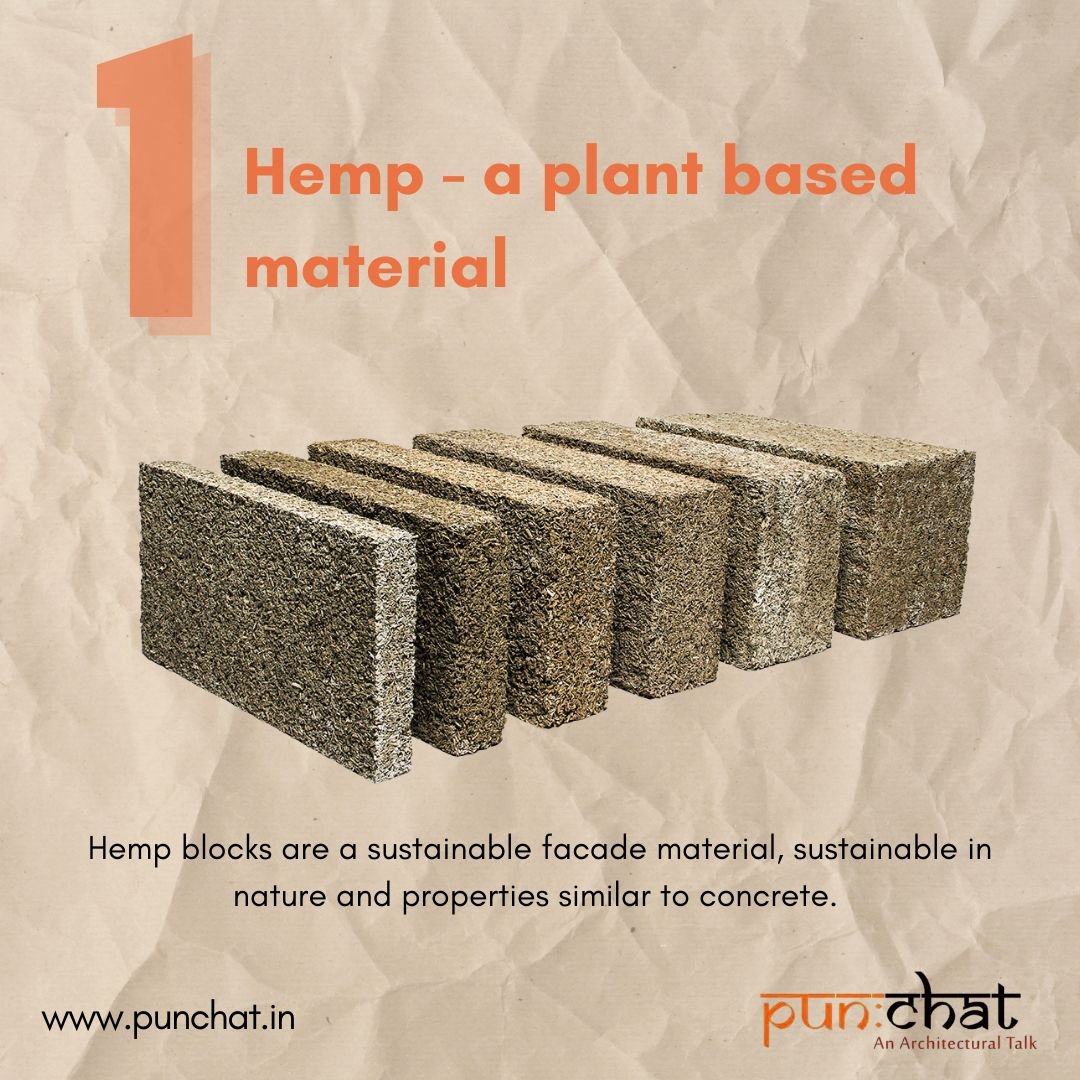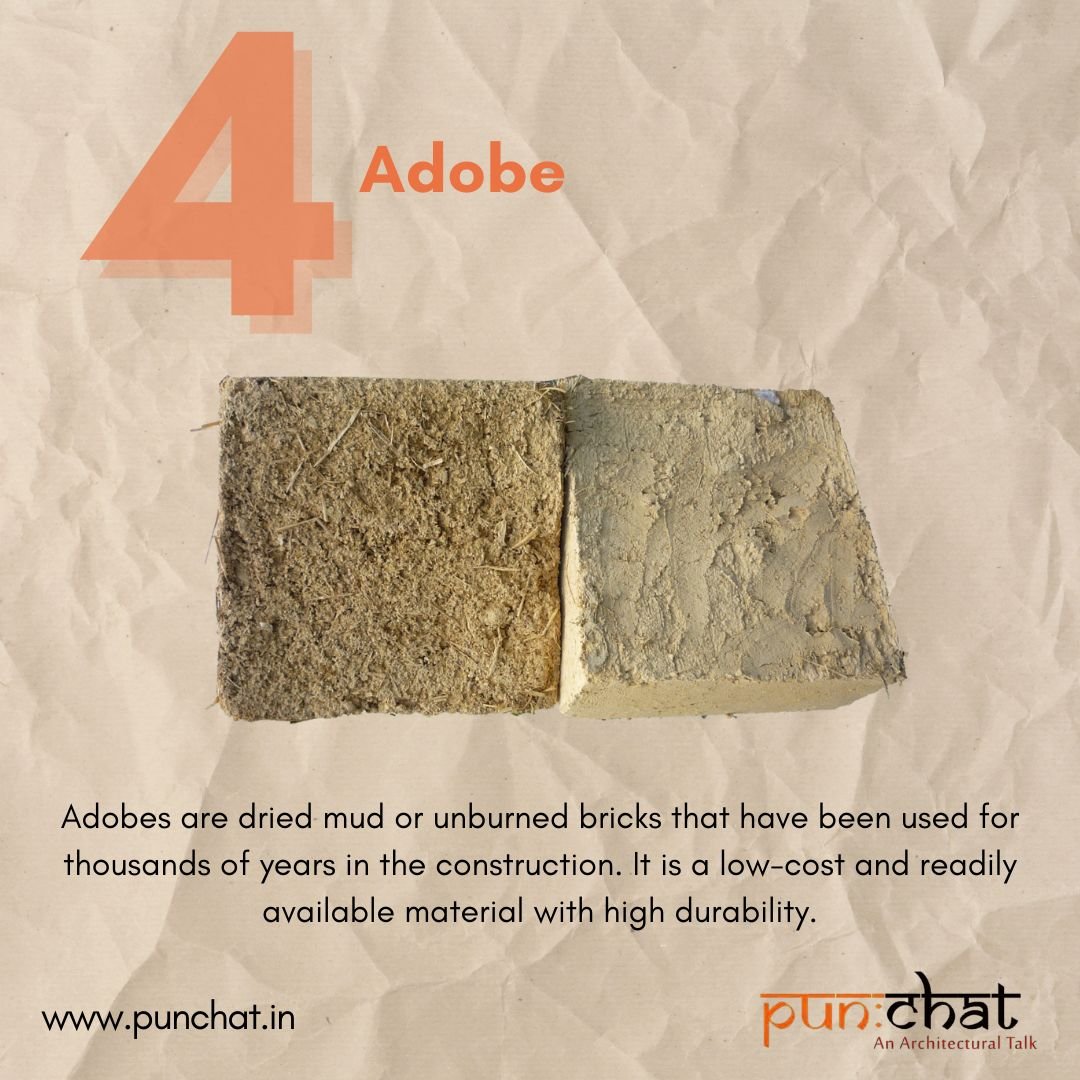Upcoming sustainable construction materials
In the coming times, architects and builders have become more conscious towards the environment and sustainable substitutes for everyday building materials like wood, brick, concrete and many more. The current building materials have not only depleted our natural resources but also played a huge role in producing pollution and releasing toxins in our surroundings.
For a better tomorrow, research and initiative have disclosed certain green materials that not only are better substitutes but also are a step towards net-zero structures. So here we present a list of 10 sustainable materials that will develop a better, safer and greener tomorrow.
1.Hemp
Hemp is a plant based material that grows readily without water and pesticides. In recent times the use of hemp has expanded as a building material. Hempcrete is a building composite similar to concrete, made by wet-mixing hemp hurds with a lime-based binder and water. This mixture can then be cast into molds or applied directly as a wet loose-fill material which hardens once dried, serving several construction and insulation purposes. Hemp blocks are a sustainable façade material, sustainable in nature and properties similar to concrete.
2.Rice Husk Ash Concrete
Rice husk ash (RHA) is an agricultural waste byproduct, and its disposal presents a major challenge by waste managers. The potentials of rice husk ash (RHA) as a cement replacement material in concrete and mortar is well proven. RHA concrete reduces heat evolution during slaking, increases strength, impermeability and durability by strengthening the transition zone, modifying the pore-structure and also plugs the voids in the hydrated cement paste.
3. Carbon Tile
Carbon Tile is made with upcycled carbon by using recovered carbon waste as a resource. To make construction sustainable and tackle pollution, Carbon Craft Design takes black carbon extracted from polluted air and upcycles it to make stylish, handcrafted building tiles. Working in collaboration with Air Ink for soot, the firm is engaged in handcrafting carbon tiles in distinct colors.
4.Adobe
When thinking of building with a lower carbon footprint, Adobe is not a commonly known material. Adobes are dried mud or unburned bricks that have been used for thousands of years in the construction. It is a low-cost and readily available material with high durability. As the bricks are naturally baked in the sun, they require no additional energy. Structures built using adobe have longer lifespans and can withstand any kind of weather.
5.Straw Bales
Yes straw, the same straw used to feed cattle’s and also for multiple purposes like fuel, paper, packing etc. Straw bales are made from the waste of the agricultural industry. The material takes you back to ancient times, when straw was used to make houses and roofs. With advancement in technology, straw has proven to be an excellent material with high insulation and soundproof properties. They are used in walls, ceilings and attics to offer temperature modulation in both summers and winters. They are biodegradable, affordable, and can be harvested easily.
6. Recycled Plastic
Plastic has been known as the villain for polluting earth for a long time. But this ideology is changing with time. Rather than milling new materials for construction, manufacturers are picking trash and using it to their advantage. The recycled plastic is used to produce a material similar to concrete. This technique was first introduced in Africa, where plastic is melted and molded to form bricks, pipes, floor boards etc. When spun into fiber, plastic can also be utilised as carpets. Plastic as a building material reduces greenhouse emissions and improves the environment.
7. Wool
Insulation is termed eco-friendly if it sufficiently cuts down on energy used for heating and cooling. Wool has been trending for the same. wool has a 10% greater insulating factor and is able to absorb, retain and release moisture and still keep its thermal properties.It is affordable and does not degrade easily.
8. Rammed Earth
Earth construction is one of the older techniques of construction. It consists of using a mould with two parallel boards to compact the earth inside them such that in situ wall construction is achieved. Rammed earth walls and floors can be used as thermal storage, allowing the sun to warm them in the day and slowly release the warmth in the cooler evenings. Buildings made with rammed earth are made safer by the use of rebar or bamboo.
9.Bamboo
Bamboo has been popular as a building material since ancient times. In recent years it has gained importance due to its high renewable rate and fast growth. With shortage in wood, bamboo has taken its place in terms of strength and durability. It is a popular choice in earthquake-prone areas for low cost housing. Bamboo can be used in flooring and cabinetry. The tensile strength of bamboo rivals steel and are used heavily in commercial areas.
10.Cork
Just like bamboo, cork grows fast. With a growing demand in the last few years, cork is being used in numerous construction projects. It is gathered from the tree bark and regenerates after harvesting. Cork is resilient, flexible and reverts to its original shape even after enduring sustaining pressure. Its resilience and resistance to wear, makes it a common element in floor tiles. It absorbs sound, is a good thermal insulator and it is nearly impermeable.
The sustainability of your construction materials is key for a long-lasting property. The popularity of these materials may not be touching skies right now, but the trend of eco-friendly materials is here to stay. Hopefully this list gave you a clarity on choosing the right material for your next project. We look forward to keeping you updated with the ongoing and upcoming vogues of the construction industry. If you have another material in mind to be added, do let us know in the comments section below.
Build Green! Stay Green!







